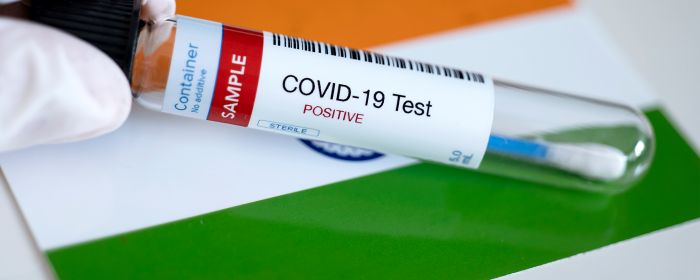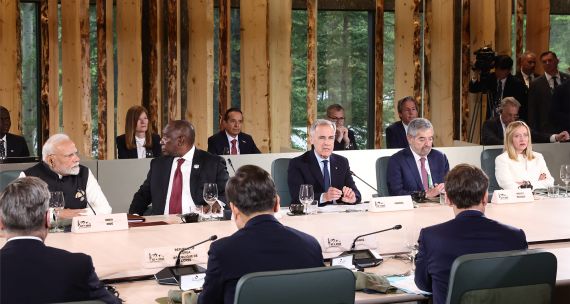India’s response to the COVID-19 pandemic has received both accolades and criticism. The hard lockdown initiated on March 25 may have been effective in preventing the rapid spread of the virus, but India has failed to flatten the curve as cases continue to rise steeply. India has climbed to the 4th rank globally, with more than 440,000 confirmed cases. And yet the country has already begun reopening the economy in phases and rules out another nationwide lockdown.
India’s low rate of COVID-19 testing has sparked fears that it could mask the depth of the crisis in a country of 1.3 billion people and facilitate future outbreaks.Like the rest of the world, India introduced measures to curb the COVID-19 outbreak, such as social distancing, maintaining personal hygiene, banning large public gatherings, and conducting COVID-19 tests. The government also steered public awareness campaigns, promoted contact tracing applications through mobile phones, and gradually increased the lockdown period in phases. However, and despite an already high number of cases, India’s low rate of COVID-19 testing has sparked fears that it could mask the depth of the crisis in a country of 1.3 billion people and facilitate future outbreaks. In the Indian city of Chennai (Tamil Nadu), a second wave has already forced the state government to lockdown the state capital for 12 days.
Over the past two months, Indian health-care authorities have increased their daily tests significantly, to 5,490 tests per million. But, despite putting significant investment in testing, those numbers are woefully behind other Asian countries that have successfully controlled the spread of COVID-19, such as South Korea. South Korea is undoubtedly a much smaller country in terms of size and population, but its success indicates the need for rigorous testing on a large scale. India’s increased testing also leads to other issues, including accessibility and affordability of testing, and challenging India’s COVID-19 supply chain’s ability to scale, ultimately endangering the country’s capacity to deal with the pandemic.
India’s COVID-19 testing policy
After a slow start in testing for COVID-19, the Indian government applied lessons learned from the 2009 swine flu, including reliance on an “intelligent testing strategy,” multiplying testing laboratories across the country, training technicians, and devising new techniques to test samples. These steps helped meet the challenges posed by mass migration and the inter-state mobility of migrant workers. The number of laboratories conducting the tests, both public and private, has increased almost fivefold, from 190 in April to 1,000 in June.
The increase in testing capacity and the number of tests conducted may have led to a higher case count, but it has also mounted the pressure on laboratories tasked with the job, creating other issues. For example, the government of Delhi set deadlines for private laboratories in the city to submit test results and paperwork within 24 hours of collecting the sample. These tight deadlines led many private laboratories to reportedly delay sample collections by two to three days to meet that requirement, irrespective of the patients’ health conditions.
Most insurance schemes in India are profoundly flawed, and many don’t cover diagnosis or medications.Another significant issue highlighted by India’s revised testing policy is the public affordability of testing. India has a decentralized health-care system with both public and private entities playing a significant role in the financing and delivery of health services, with health insurance optional. In 2019, more than 472 million (35%) Indians were covered by health insurance, mostly under government-sponsored health insurance schemes. Under the Narendra Modi-led government, around 300 million Indians living below the national poverty line (BPL) are provided free health care coverage through the Ayushman Bharat (AYB) health insurance scheme. But most insurance schemes in India are profoundly flawed, and many don’t cover diagnosis or medications. As a result, the general Indian population depends on out-of-pocket expenses for its medical needs since paying regular health insurance premiums is considered an additional financial burden.
During the COVID-19 pandemic, the Indian government has been providing free tests to all who meet the criteria for testing, which was revised on May 18 to include asymptomatic close contacts of COVID-19 positive individuals and migrant workers, among others. But the government facilities have a long waiting line. This wait, in turn, has increased the demand for private lab testing, which can provide COVID-19 tests for a fee to anyone who wants to be tested for COVID-19 and doesn’t want the wait associated with government labs. The Indian Council of Medical Research (ICMR) initially set the price for these tests at about C$84 (INR 4,500) at home and C$65 (INR 3,500) in hospitals.
The media and the public have questioned this testing cost on multiple occasions. There were concerns that the ICMR-proposed maximum retail price of C$84 was inflated; in South Asia, India has the highest cost for COVID-19 tests. On May 25, ICMR relented and removed the set prices for COVID-19 tests as supplies stabilized due to the domestic production of test kits, and asked state governments to determine the test costs.
In effect, public medical care facilities continue to provide COVID-19 tests for free to all who meet the criteria set out by ICMR, but private laboratories only need to provide free tests to those who meet the ICMR criteria and are from economically weaker sections of the society. For the rest of the population, the private labs can continue charging up to C$84, a cost that is not inconsequential to the Indian middle class, where the average monthly household income is around C$228. Following the revised ICMR guidelines on the test cost, the Indian states of Maharashtra, Telangana, and Delhi have proposed capping the COVID-19 tests at a lower rate of C$39 to C$49 (INR 2,200 to 2,800). But this remains a financial challenge to the average middle-class Indian.
Homegrown kits provide a solution
India’s health care limitations are partially to blame for the country’s slow response in curbing the COVID-19 outbreak, and India’s poorly funded health-care system is part of the problem. In 2019-20, India’s public health care expenditure was about 1.29 per cent of the country’s GDP, one of the lowest in the world. This lack of investment translates to a weak health-care sector. It impedes the country’s capacity to provide accessible care to its citizens, especially in times of need, such as during this pandemic. Insufficient funding for health care in India also leads to inadequate access to medical professionals and services. For example, India has one government doctor for every 10,000 citizens, lower than the World Health Organization’s standard of one doctor per 1,000 residents.
The high cost of getting tested for COVID-19 may ultimately act as a deterrent for many Indian citizens to get tested for the virus and could lead infected individuals to shy away from getting tested and treated. One suggestion for decreasing the cost of testing in India is to accelerate the mass production of homegrown kits, such as the one developed by an Indian company, MyLab. The MyLab kit costs approximately C$22 (INR 1,200) and could be a cost-effective alternative. Another Indian company has developed a viral extraction kit (Agappe Chitra Magna) that will cost just about C$3 (INR 150). As this kit is moving into mass production, it could significantly help reduce the overall cost of COVID-19 tests in India.
The high cost of getting tested for COVID-19 may ultimately act as a deterrent for many Indian citizens to get tested for the virus and could lead infected individuals to shy away from getting tested and treated.The Indian government recognized the constraints of depending on imported kits and set-up a task force that responded to this challenge, leading local manufacturers in accelerating the production of swabs and various parts of test kits. The government also set-up multiple COVID-19 test kit validation centres that together evaluated 116 different test kits, and validated 47, of which 21 are Indian, including the MyLab kit. Meanwhile, MyLab has partnered with the largest vaccine developer in India, Serum Institute, and AP Globale to scale up their test kit manufacturing capacity. The company is also collaborating with another Indian firm, Syngene, to secure a steady supply of raw materials through local sources.
This diversification process helps to reduce costs incurred from import duties, improve the country’s testing capacity, and also provides India with better control over its supply chain. According to the World Health Organization and public health experts, widespread COVID-19 testing is one of the best defences against the disease. The Indian government’s accelerated response in terms of establishing a testing infrastructure to increase testing for COVID-19 is commendable. The Indian government, however, will also need to up its game in providing affordable health care to its citizens, particularly in light of the COVID-19 crisis that has brought both health and financial misfortune to so much of the country.





